Alphorn school blows students away
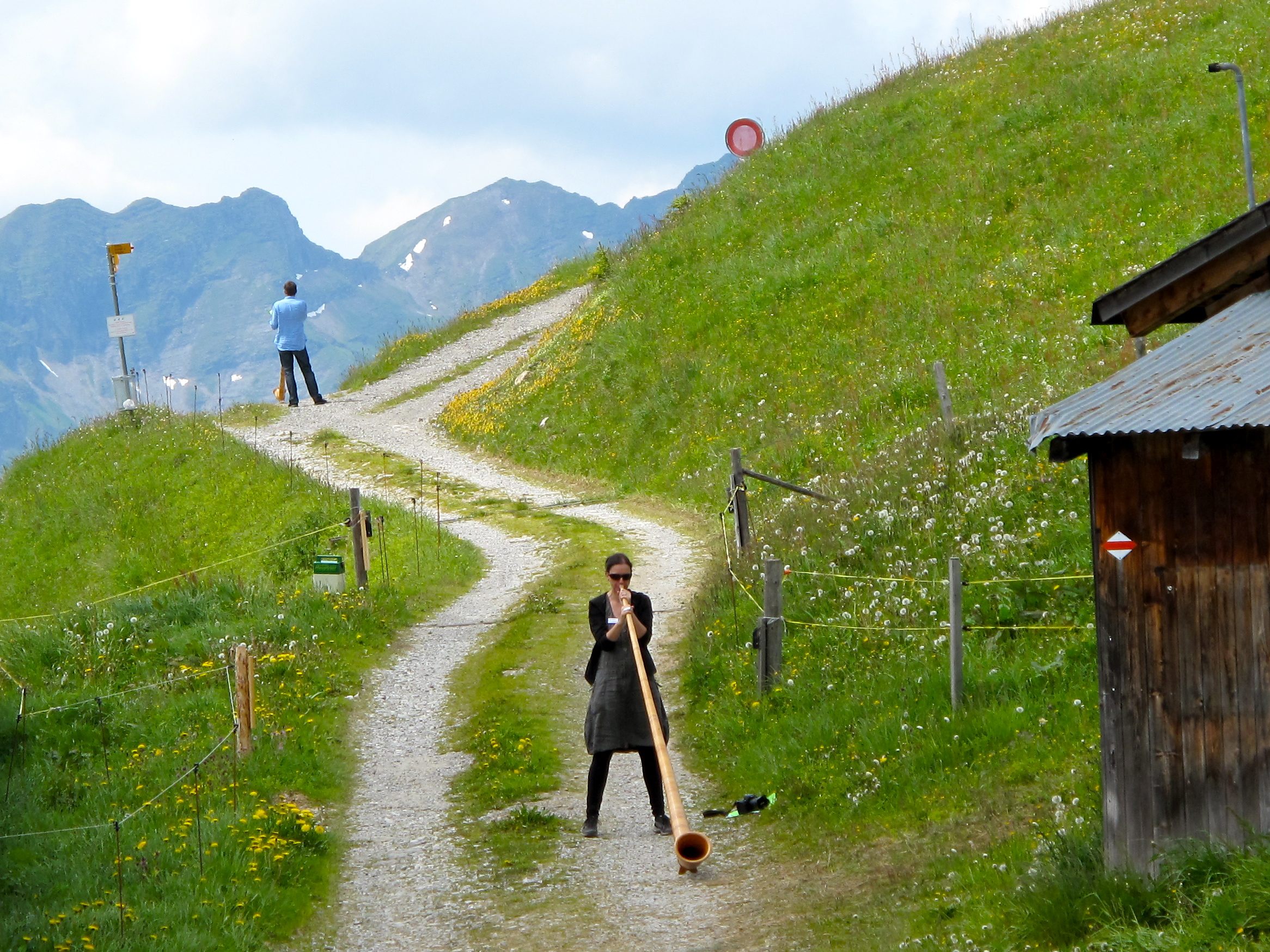
The sound of the alphorn is luring more and more aspiring musicians of all skill levels up into the mountains – and lungs like bellows aren’t a requirement.
Fritz Frautschi, who founded the Swiss Alphorn School in the Bernese Alps 16 years ago, is preparing to give an intensive weekend course on the appropriately named Hornberg, or “Horn Mountain”, near the exclusive resort of Gstaad.
“I think the alphorn is growing in popularity because people want to get back to nature. And they appreciate the warm sound that the Alphorn produces,” he tells swissinfo.ch.
The alphorn was traditionally used by Alpine herdsmen to communicate across the valleys, and Frautschi honours its tradition by teaching outdoors. The Hornberg is a half-hour hike from the Horneggli cable car station, the nearest form of public transport.
But the remote setting deters no one. One week after the intensive weekend workshop, Frautschi’s weeklong summer course will follow, also being held in a rustic location. Both workshops are booked out.
At 10am, 17 alphorn students – 16 Swiss and one American – are standing on the terrace of the Hotel Hornfluh, enjoying a drink before their hard work begins. They are here for Frautschi’s intensive weekend course, which means they’ll have up to four hours of instruction each day as well lectures on music theory and breathing technique.
Trust
Some students describe themselves as “absolute Greenhorns”, having never played an instrument. Others are musicians by trade or have taken courses from Frautschi before. Many already possess their own alphorns, but if not, Frautschi rents them for a nominal fee.
The lobby of the Hotel Hornfluh is decked out with an alphorn store. Besides teaching the alphorn, Frautschi also sells them. On display are a dizzying array of alphorn mouthpieces, alphorn instruments – costing SFr2,000-3,000 ($1,900 -2,800) – alphorn carrying cases and hundreds of books on alphorn music.
Frautschi tells students that if they want to buy anything, they should just put the cash in a box on the table. “I always trust an alphorn player,” he says.
During a short orientation meeting, Frautschi explains the schedule to the students. Today, they will have group lessons according to ability, followed by a break for lunch, then lectures on breathing technique and music theory, and finally more group lessons.
While a concert may be played on Sunday afternoon, the real goal is not a performance.
“The most important thing is that when you leave here and you practise, you will practise correctly,” Frautschi tells the students.
“Kiss more!”
The students are divided into three experience-appropriate groups. They then head outside to play, with the mountains as their audience.
While the more advanced students begin practising music distributed by Frautschi, the beginners concentrate on simply trying to get a sound out of their three-metre instrument.
Half an hour into the lessons, one beginner is so frustrated with trying to make a sound that she sings through the alphorn instead.
According to Frautschi, the most difficult part of learning the alphorn is mastering how to blow it. “You can’t force the breath. Your lips will not hold up.”
Christine Stüssi, an intermediate student from Bern, offers this tip for lip endurance: kiss your spouse more.
Many alphorn students complain of lip pain. “I hurt my lips playing in another course and now I hope I can improve,” says Ursula Pfister, a student from Hemberg.
Waldemar Krupski, a student from Bern, agrees. “You have to be careful not to blow too hard.”
Breath control
The alphorn is difficult to play because all notes are breath controlled – there are no keys that correspond to certain pitches. But Benjamin Seale, who teaches alongside Frautschi during the alphorn intensive weekend, says that while the alphorn is harder to play than the trumpet, it’s not impossible.
“If someone wants to learn, they’ll learn,” Seale says. (Click on the link in the righthand column to hear the students play.)
Seale started playing the alphorn two years ago, which with regular practice Frautschi says is enough time for most people to be able to play basic melodies.
“I’m half Swiss, half English, so I figured I should learn. And it’s just really cool to be able to play Amazing Grace standing on a mountain,” Seale says. He lives in nearby Feutersoey.
Bovine audience
Like Frautschi, Seale played a brass instrument for many years before giving the alphorn a try. Knowing a brass instrument like the cornet, tuba or trombone gives a new alphorn player an advantage.
The sole American participant is proof: just two hours into the intensive weekend, this alphorn neophyte, who had previously played the trumpet, has already advanced to the intermediate group while the other beginners are still struggling to make a sound.
After the morning lessons, some of the students choose to spend their lunch hour with their horn, climbing up the mountain to find a “practice room”. But this change of location is an open invitation to a new audience: the cow.
“Cows love the sound of the alphorn,” says Frautschi, who explains that they often surround him when he practises.
A few metres away, a beginner finally makes her first sound. She grins as a cow sticks her head out the window of the nearby barn and leans her neck on the gate. One note and she already has an audience.
The alphorn’s use varied between the 16th and 20th centuries, from a tool for herdsmen to communicate across neighbouring Alps and to call their cows back to the farm for milking. It was also played on summer nights in the Alps as a form of prayer in Protestant regions.
By the start of the 1800s the alphorn had more or less disappeared from herdsmen’s use, as individual dairies were increasingly being replaced by big co-operatives In 1805, the first herdsmen’s festival on the Unspunnen meadow near Interlaken aimed to boost a revival in alpine music but it failed, with just two candidates stepping up for the alphorn competition. At the 1808 herdsmen’s festival there was only one player.
Meanwhile, the instrument was gradually becoming known as a symbol of Switzerland and was attracting tourists. The Bernese governor Niklaus von Mülinen is attributed with ensuring the tradition did not die out completely by making the instruments in the 1820s and lending them to singers in Grindelwald, who were taught to use them in courses.
In 1827 the musicologist Joseph Fétis pronounced the alphorn the Swiss national instrument. It was formally brought back into Swiss social life with the founding of the Federal Yodelling Association in 1910, which has organised alphorn blowing courses since 1921 and published traditional tunes and new compositions. At today’s alphorn blowing competitions, players range from soloists to quartets and choirs.
After 1968 classical composers became more in contact with traditional instruments and in 1972 the first concerto for alphorn and symphony orchestra was composed by Jean Daetwyler. Jam sessions with jazz artists followed. At the beginning of the 1970s, the Federal Yodelling Association and its sub-unit, the traditional alphorn players, accepted the polyphonic playing of a piece entitled Alphorn-Fa and welcomed female candidates at competitions.
Professional musicians also started to do more experimental improvisations with the alphorn. Among them: Jürg Solothurnmann’s jazz band, the Alpine Jazz Herd, included an alphorn and jazz musician Hans Kennel and the three other members of the Contemporary Alphorn Orchestra converted the alphorn into an idiophone in scraping the rattan-windings with the mouthpiece.
It made a crossover to pop in 1977 when Eurovision entry Pep Lienard used an alphorn as part of his song, Swiss Lady.

In compliance with the JTI standards
More: SWI swissinfo.ch certified by the Journalism Trust Initiative
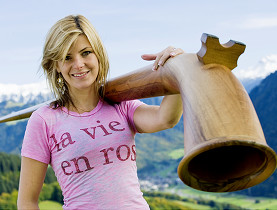
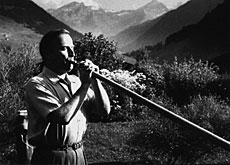

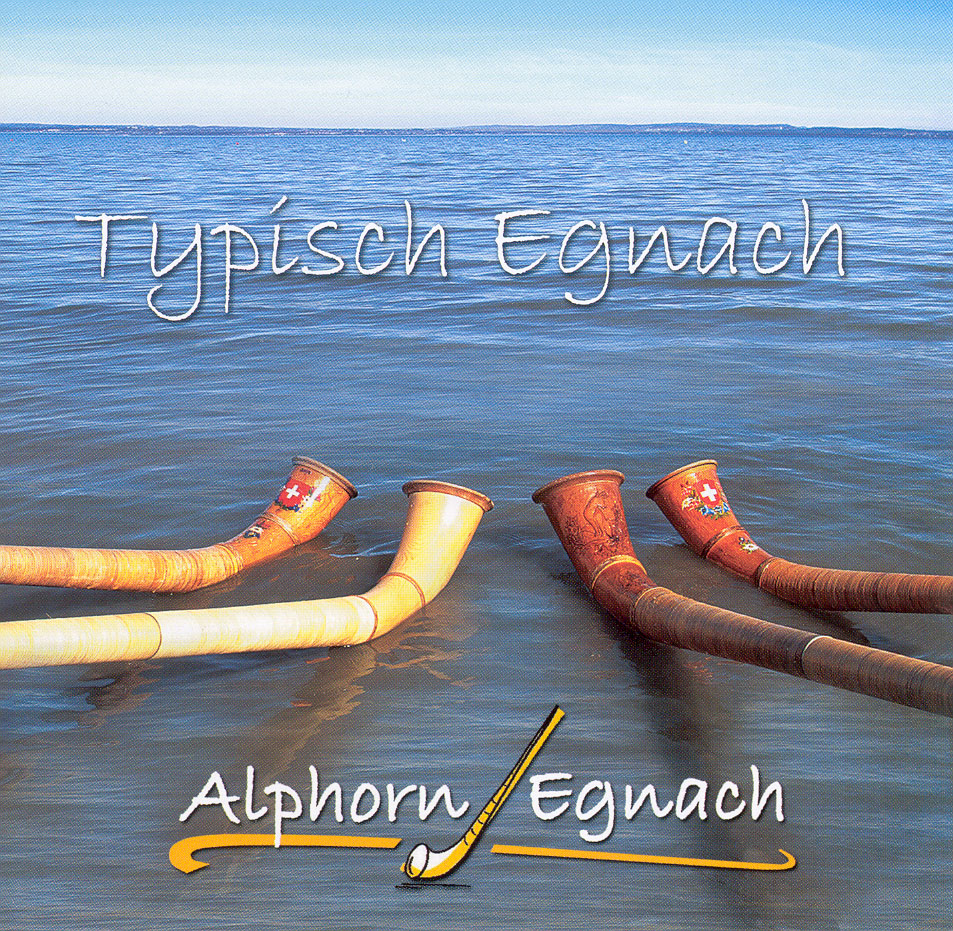
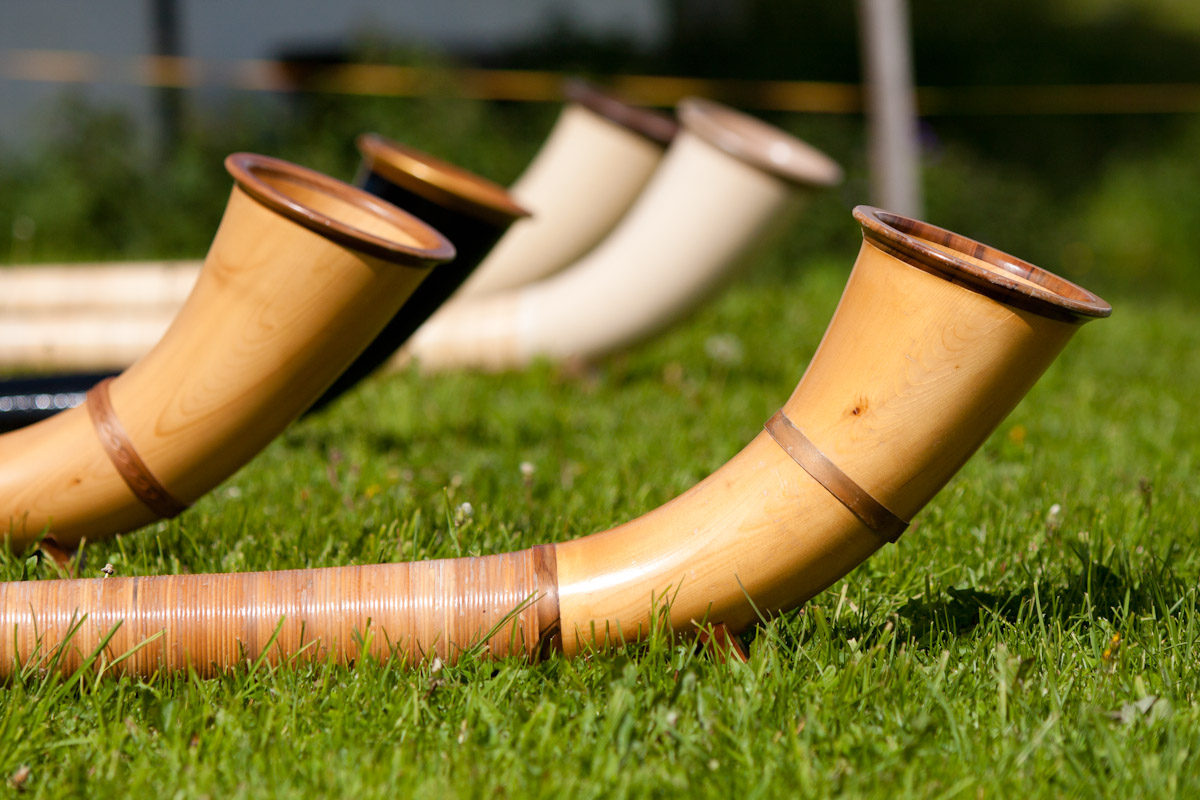
You can find an overview of ongoing debates with our journalists here. Please join us!
If you want to start a conversation about a topic raised in this article or want to report factual errors, email us at english@swissinfo.ch.